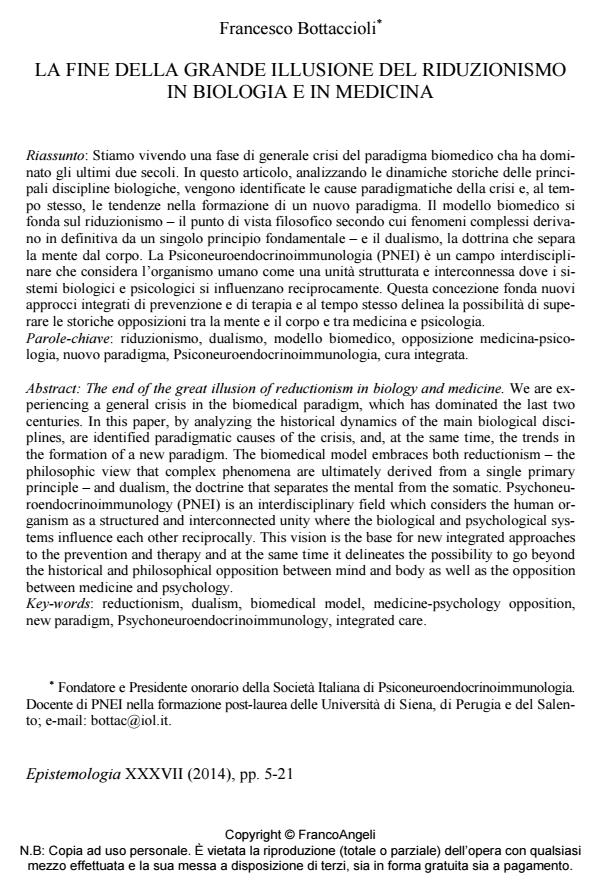La fine della grande illusione del riduzionismo in biologia e in medicina
Journal title EPISTEMOLOGIA
Author/s Francesco Bottaccioli
Publishing Year 2014 Issue 2014/1
Language Italian Pages 17 P. 5-21 File size 628 KB
DOI 10.3280/EPIS2014-001001
DOI is like a bar code for intellectual property: to have more infomation
click here
Below, you can see the article first page
If you want to buy this article in PDF format, you can do it, following the instructions to buy download credits

FrancoAngeli is member of Publishers International Linking Association, Inc (PILA), a not-for-profit association which run the CrossRef service enabling links to and from online scholarly content.
- Brain, Decision Making and Mental Health Daniela Dumitru, Gabriela-Paula Florea, pp.135 (ISBN:978-3-031-15958-9)
- Metacognition and Medical Humanities in Medical Education Gabriela-Paula Florea, pp.105 (ISBN:978-3-032-01069-8)
- Metacognition and Medical Humanities in Medical Education Gabriela-Paula Florea, pp.41 (ISBN:978-3-032-01069-8)
- Metacognition and Medical Humanities in Medical Education Gabriela-Paula Florea, pp.57 (ISBN:978-3-032-01069-8)
Francesco Bottaccioli, La fine della grande illusione del riduzionismo in biologia e in medicina in "EPISTEMOLOGIA" 1/2014, pp 5-21, DOI: 10.3280/EPIS2014-001001